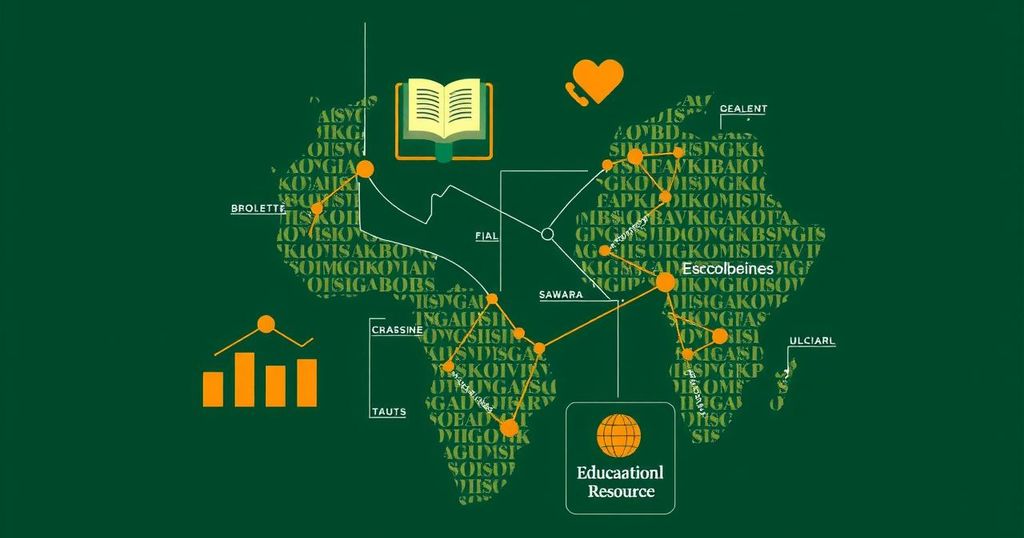This article explores the relationship between public debt and education in Zimbabwe, Eritrea, South Sudan, and South Africa, highlighting how fiscal constraints and governance issues impede access to quality education. Each country’s unique situation illustrates the need for comprehensive debt management strategies that prioritize educational investments to fulfill the right to education.
The intricate relationship between public debt and educational access is critically examined through the lenses of Zimbabwe, Eritrea, South Sudan, and South Africa. This analysis reveals that the financial burdens of debt profoundly undermine efforts to invest in education, thereby compromising the right to quality schooling. Each country’s unique context illustrates how governance issues and fiscal constraints divert necessary resources away from educational commitments, leading to significant inequities in access and quality.
In Zimbabwe, long-standing economic mismanagement and hyperinflation have devastated public investments in education. The nation faces a staggering debt that siphons funding from critical services, leaving schools underfunded and hampering educational quality. Rural areas are especially hard hit, with low enrollment rates and inadequate infrastructure limiting opportunities for children.
Conversely, Eritrea showcases the adverse effects of enforced self-reliance and prioritization of military spending over education. The combination of national service and debt has significantly stifled access to educational opportunities. Compulsory military obligations disrupt schooling, and without international support, the educational infrastructure remains severely underfunded.
Despite its stronger economic standing, South Africa grapples with profound disparities shaped by its apartheid legacy. Regions and socio-economic groups experience varying levels of educational quality, exacerbated by financial pressures. Corruption and insufficient resource allocation continue to challenge the educational system, leading to overcrowded classrooms and under-resourced schools.
South Sudan’s plight is particularly distressing, as conflict and corruption have compounded a crippling debt burden. Despite access to oil revenues, the mismanagement of resources leaves educational infrastructure in tatters. With a significant portion of the population displaced and educational access curtailed, the national budget reflects minimal investment in education due to overwhelming debt obligations.
The cumulative insights from these four countries emphasize the urgent need for cohesive debt management strategies that prioritize educational investments. Sustainable education funding cannot thrive amidst debilitating debt. Therefore, re-evaluating debt structures, including the possibility of debt cancellation for overburdened nations, becomes imperative.
Furthermore, the lessons learned call for a global approach that incorporates international law frameworks, such as the International Covenant on Economic, Social and Cultural Rights (ICESCR) and the Sustainable Development Goals (SDGs), which advocate for the right to education. Aligning fiscal policies with these goals is essential for directing resources towards education rather than excessive debt servicing.
Moreover, effective governance and transparency must be hallmarks of any debt management strategy. Engagement with local communities and stakeholders in budgetary processes can foster accountability and ensure education receives the funding it duly requires. By adopting comprehensive fiscal reforms and anti-corruption strategies, nations can safeguard educational resources, pivotal for a sustainable future.
The article examines the complex interplay between public debt and education in four African countries—Zimbabwe, Eritrea, South Sudan, and South Africa. The study aims to elucidate how financial constraints, legacy issues, and governance problems influence access to education. In an era where the right to education is increasingly recognized as fundamental, understanding how economic policies impact educational outcomes becomes vital for policymakers, educators, and international communities involved in education and development initiatives.
In summary, the intersection of debt and education reveals how economic constraints and governance issues critically undermine the right to education across Zimbabwe, Eritrea, South Sudan, and South Africa. Addressing these challenges requires a multifaceted approach to debt management, emphasizing strategic educational investments. By reforming fiscal policies, enhancing governance, and reinforcing international support, countries can harness their resources to fulfill their educational commitments and ensure a more equitable future for all.
Original Source: www.amnesty.org






